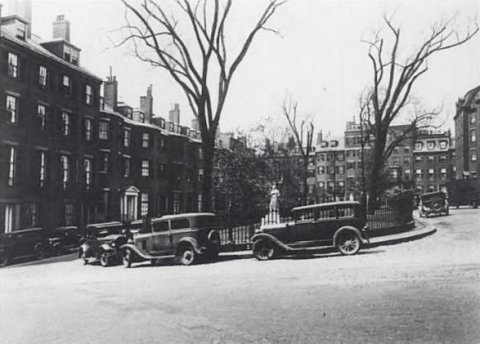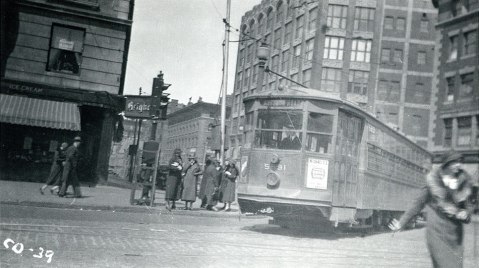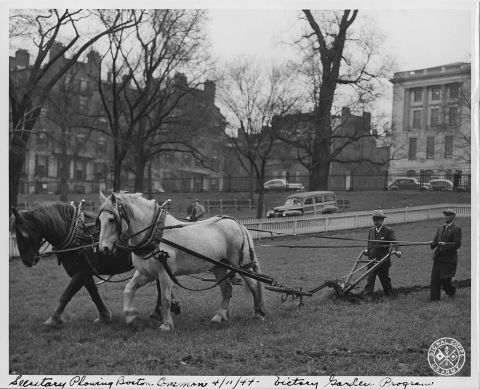The 11 Weirdest And Strangest Things That Have Ever Happened In Boston
Boston is an old city with a long history, so there are bound to have been a few quirky episodes over the centuries. However, these 11 events are more than unusual. They’re downright weird and – in some cases – creepy.
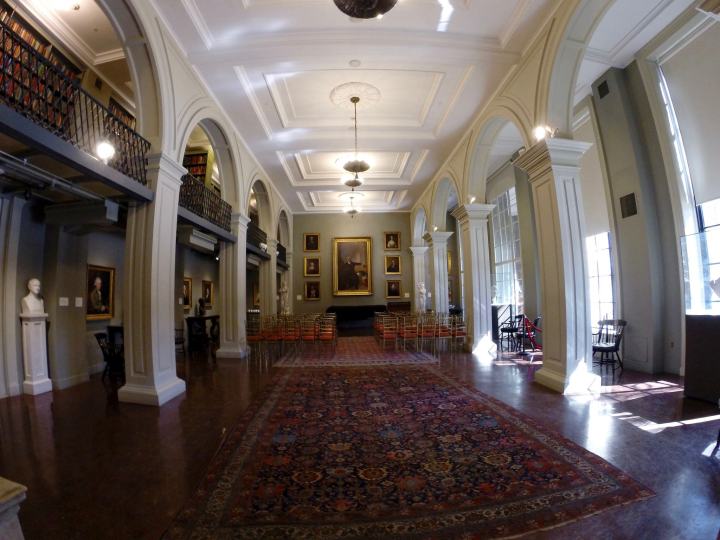
There’s one book, held at the Boston Athenaeum, that you really don’t want to check out. In 1837, James Allen was convicted – and given the death penalty - because of his activities as a robber and highwayman. He was accused by a man named John Fenno Jr. While awaiting his death sentence, Allen penned his autobiography and his dying wish was for a copy of his book to be presented to Fenno… after it was bound in his own skin.
Amazingly, the request was granted. After his execution, Allen’s corpse was taken to Mass General, where some flesh was set aside to be turned into a book jacket. The volume was then given to Fenno. His family members eventually donated what has to be the most disturbing tome in Massachusetts to the Boston Athenaeum. Bet the folks there were thrilled!
Amazingly, the request was granted. After his execution, Allen’s corpse was taken to Mass General, where some flesh was set aside to be turned into a book jacket. The volume was then given to Fenno. His family members eventually donated what has to be the most disturbing tome in Massachusetts to the Boston Athenaeum. Bet the folks there were thrilled!
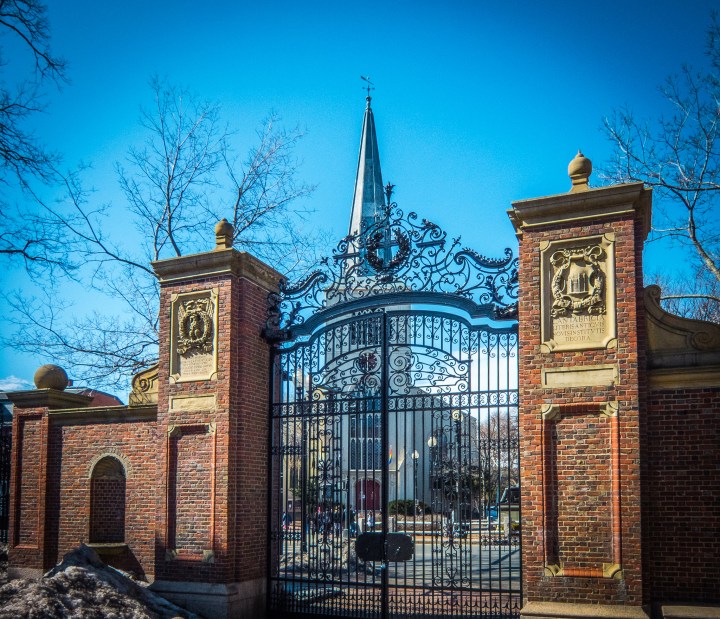
Today, Harvard offers students a broad range of extracurricular activities from juggling clubs to jujitsu. Around 1770, a secret club was established. The Spunker Society consisted of medical students who dug up bodies in the middle of the night - even one of president Sam Adams’ sons was a member! The students were trying to learn about human anatomy and there was a shortage of available corpses, so they… improvised?
It’s hard to judge whether this practice made a notable contribution to medical knowledge. We may never know, because In 1815 a law was passed in Massachusetts, making corpse snatching a felony. In 1999, human bones that appeared to have been used for dissection were discovered in an old cistern at the college.
It’s hard to judge whether this practice made a notable contribution to medical knowledge. We may never know, because In 1815 a law was passed in Massachusetts, making corpse snatching a felony. In 1999, human bones that appeared to have been used for dissection were discovered in an old cistern at the college.
Advertisement
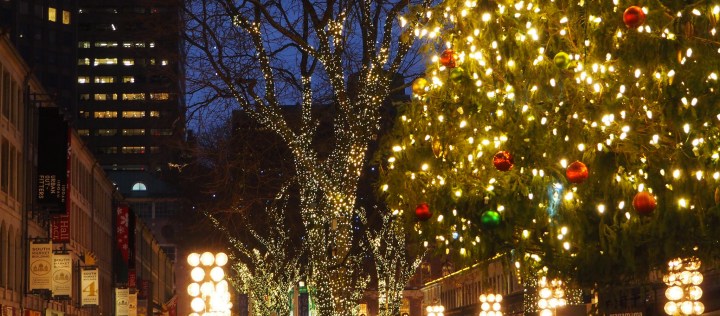
In 1659, Puritans living in Boston decided that Christmas was too Pagan a holiday to be permitted. Folks like Reverend Increase Mather objected to the fact that Christmas was celebrated on December 25 because the date was close to the winter solstice, making it easier to convert Pagans who were already accustomed to celebrating at that time, rather than because it was actually the birthday of Jesus Christ. The Christmas ban was overturned in 1681.
Advertisement
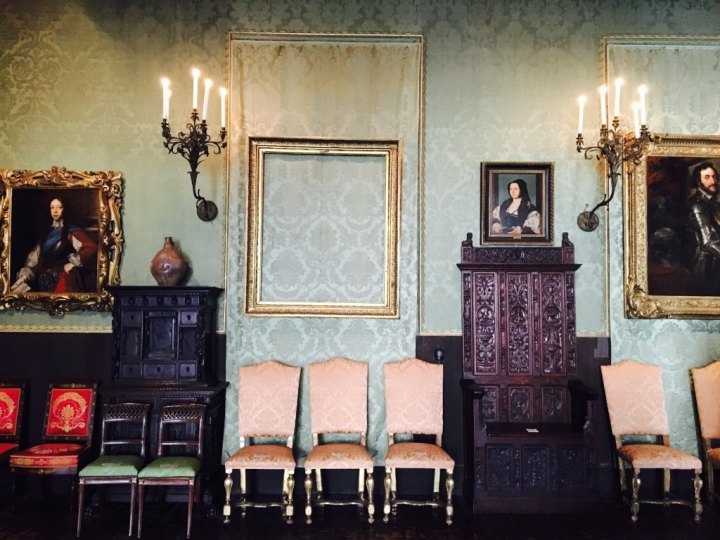
A total of 13 paintings and other works of art valued at over $300 million were stolen from the Isabella Stewart Gardner Museum on March 18, 1990. Museum guards let in two men, who were dressed as police officers. The fake officers trussed up the guards and made off with artwork by luminaries such as Manet, Vermeer, Rembrandt, and Degas. The art has never been recovered and empty frames hang in the museum, as a reminder of what was lost. The weird part isn't that an art heist was attempted, but that it was so easy to execute. It's also odd that the thieves of such high profile works seem to have disappeared without a trace.

On the surface this might sound amusing, but the molasses spill killed 21 people and injured about 150 more. If you’ve ever burned yourself on hot sugar you have a faint inkling of the threat Bostonians faced on January 15, 1919. A 90-foot wide tank of molasses stood 50 feet above Commercial Street in the North End. When its temperature suddenly rose, the tank exploded, unleashing a 15-foot high wave of molasses that traveled at 35 mph. The devastation required weeks of clean up and some claim that the smell of molasses still lingers to this day.
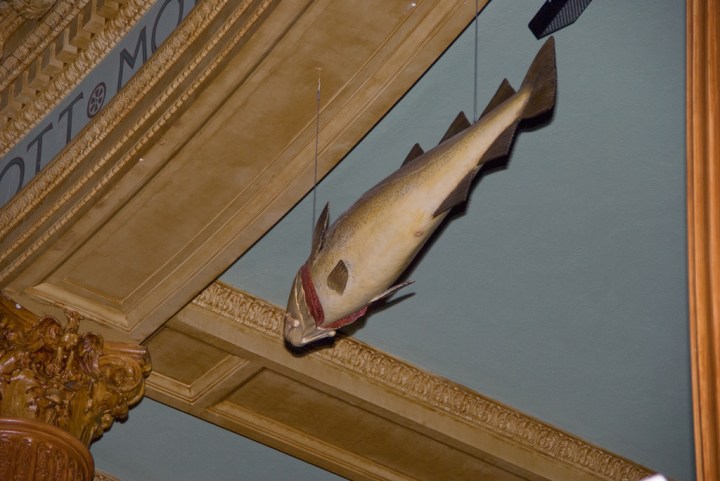
Although the importance of cod-fishing to Massachusetts’ history and economy is no joke, the fact that a Sacred Cod adorns our statehouse does elicit a snicker or two. The wooden carving that hangs from the ceiling today is thought to be version 3.0, with the earliest incarnation rumored to have been installed in the 18th century. In 1933, some staff members of the "Harvard Lampoon" cod-napped it as a prank. Authorities actually dredged the Charles River during the search for the fish, which was returned after two days. In 1968 UMass Boston students briefly stole it as an act of protest. You can still see the Sacred Cod at our statehouse today.
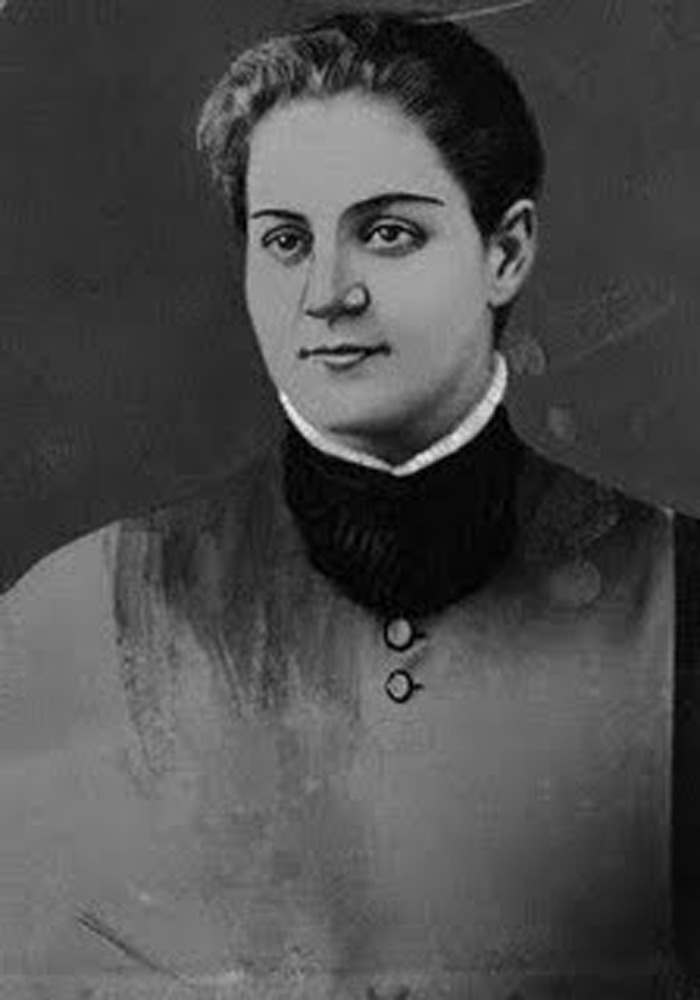
…which few people even know about. "Jolly Jane" hardly sounds like a moniker for a prolific serial killer, but that was precisely the nickname of Honora Kelley. When she was a child, Kelley’s abusive father dumped her and her sister in an orphanage. It wasn’t long, however, before she was taken into the Toppan household as an indentured servant. She was unofficially considered a member of the family and she took their last name, at some point changing her first name to Jane.
After training as a nurse, in 1885 Toppan started to "experiment" on the patients under her care. She liked to alternate between administering high doses of atropine and morphine, which had opposing effects, before giving a final overdose. She worked at several hospitals, but was fired from Mass General because its administration viewed her as careless, due to the high death toll of her patients.
Then Toppan started poisoning "friends," her landlord, her much-detested foster sister, and an entire family. This last murder spree drew the attention of authorities. Toppan was thought to have killed between 30-100 people over the span of a decade! She was declared insane and was confined to Taunton Lunatic Asylum.
After training as a nurse, in 1885 Toppan started to "experiment" on the patients under her care. She liked to alternate between administering high doses of atropine and morphine, which had opposing effects, before giving a final overdose. She worked at several hospitals, but was fired from Mass General because its administration viewed her as careless, due to the high death toll of her patients.
Then Toppan started poisoning "friends," her landlord, her much-detested foster sister, and an entire family. This last murder spree drew the attention of authorities. Toppan was thought to have killed between 30-100 people over the span of a decade! She was declared insane and was confined to Taunton Lunatic Asylum.
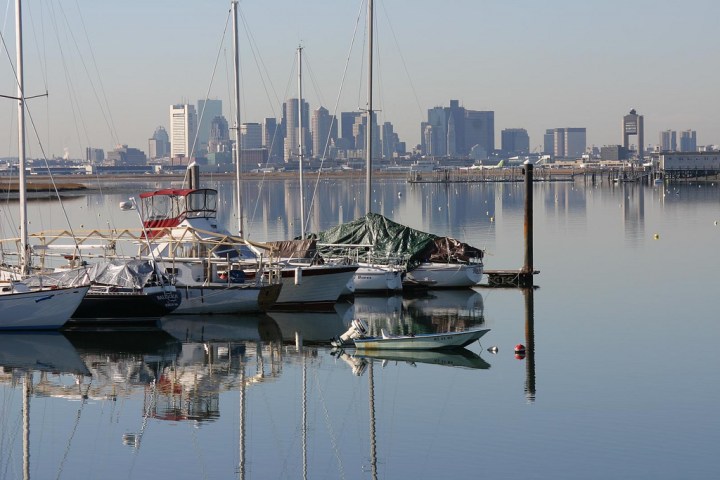
In 1938, the City of Salisbury freighter arrived in Boston Harbor after a long journey from India. Thick fog swirled around the vessel but the captain believed it was safe to proceed. Unfortunately, the City of Salisbury struck some rocks and becoming marooned in the harbor. This might have been a regular shipping accident except for the fact that the cargo included many exotic creatures, such as snakes, monkeys, and bears. There was the potential for a veritable zoo to be unleashed on the city!
Despite the danger, every single crewmember and animals was safely rescued and brought to shore. The ship and remaining cargo were lost, at a cost of between 1.5 and 2 million dollars. Today, scuba divers can still see some remains of the City of Salisbury.
Despite the danger, every single crewmember and animals was safely rescued and brought to shore. The ship and remaining cargo were lost, at a cost of between 1.5 and 2 million dollars. Today, scuba divers can still see some remains of the City of Salisbury.
Advertisement
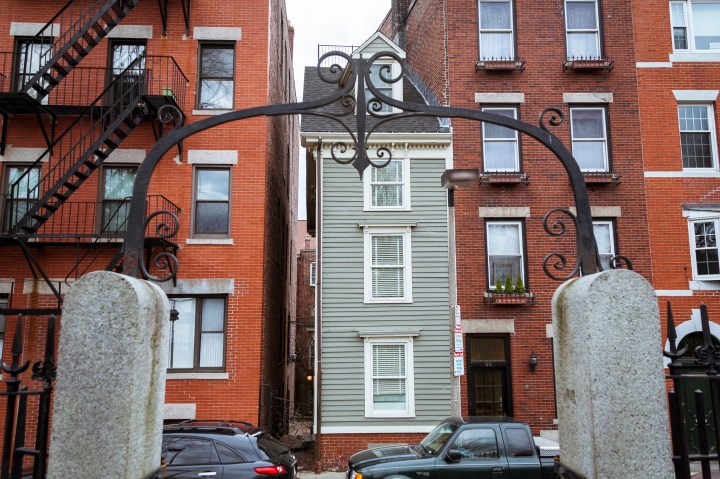
The narrowest house in Boston, dubbed the "Skinny House" can be found in the North End. The story goes that two brothers jointly inherited land when their father passed away. One son went off to serve in the Civil War and, upon his return, he discovered that his sibling had built a house for himself that took up almost the entire lot. In revenge, the wronged son built a spite house in order to block the light from his brother’s property. Earlier this year, the 1166 square foot home was put on the market for $895,000.

During his life, Houdini was almost as well known for unmasking fraudulent mediums as he was for his own magic tricks. Spiritualism was popular in the 1920s and Mina "Margery" Crandon was a famous Boston medium. Crandon was married to a surgeon and lecturer at Harvard so she had standing in the community. She was supposedly able to communicate with her deceased brother.
Scientific American ran a competition that would award a $2500 cash prize to any medium capable of showing a "visual psychic manifestation." In 1924, Houdini and fellow committee members observed 20 séances performed by Crandon. Houdini was so irate at his inability to prove Crandon was a fake that he constructed the box pictured and had her sit in it during a séance. The idea was to stop her from moving or performing sleight of hand. Houdini declared her a fraud when a collapsible ruler was found in the box, claiming she was using it to cheat. In later years, one of Houdini’s assistants supposedly admitted to planting the ruler to undermine Crandon. The truth is lost to history...
Scientific American ran a competition that would award a $2500 cash prize to any medium capable of showing a "visual psychic manifestation." In 1924, Houdini and fellow committee members observed 20 séances performed by Crandon. Houdini was so irate at his inability to prove Crandon was a fake that he constructed the box pictured and had her sit in it during a séance. The idea was to stop her from moving or performing sleight of hand. Houdini declared her a fraud when a collapsible ruler was found in the box, claiming she was using it to cheat. In later years, one of Houdini’s assistants supposedly admitted to planting the ruler to undermine Crandon. The truth is lost to history...
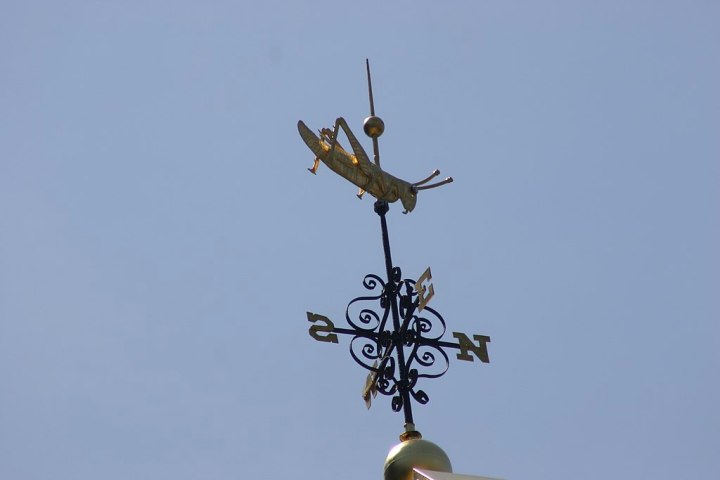
The iconic weathervane on Fanueil Hall is in the shape of a grasshopper. It has sat atop the building since 1742. In 1974, it appeared to have been stolen. During the investigation that followed, it emerged that the "thief" had just hidden the weathervane inside the cupola, probably planning to demand a ransom for its return!
How many of these did you already know about?
Not content with just reading about Boston’s history? Then you may want to view some of the oldest photos ever taken in the city. These shots bring the past to life and help you to see what has changed over the years, and which parts of Boston have remained the same.
OnlyInYourState may earn compensation through affiliate links in this article. As an Amazon Associate, we earn from qualifying purchases.


